Play, relax, rest – key to sound education
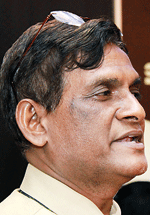
Dr. Jayantha Balasooriya (Deputy Director of Education Ministry of Education)
Lack of play, relaxation including reading, and sleep deprivation are some of the crucial missing links in Sri Lanka’s cramming-for-tests-based education system. This will stall the creation of an enlightened workforce which needs innovation and critical thinking as its core.
These were some of the thoughts and suggestions that emerged at an interesting discourse titled “Trends in Education: Are they geared to a technology-driven marketplace” organised by the Sunday Times Business Club (STBC) last week and held at the Kingsbury hotel, Colombo. Three panellists: Dr. Jayantha Balasooriya of the Ministry of Education, Dr. Jithangi Wanigasinghe, Consultant Paediatric Neurologist and Murtaza Esufally, Director – Hemas Group, dealt with education reforms, pressure on children and the need for an educated workforce for a futuristic economy, respectively.
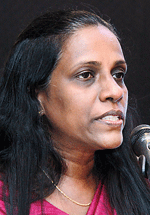
Dr.Jithangi Wanigasinghe (Consultant Paediatrics Neurologist)
Dr. Wanigasinghe, representing the Colllege of Paediatricians which has been concerned about the pressures of education on children, said reading, writing and mathematics play an important role for students to develop skills but many grade 5 level students lack this basic knowledge.
She said it was important to inculcate in students knowledge of lifelong learning. “Although we don’t talk about dropouts from school it is important to know that there are around 10-30 per cent of dropouts from schools which is an alarming trend. Do we have a good education system in the country? It is preposterous to think that our education is good when there are 90,000 dropouts from schools from a total number of 300,000 students,” she added.
Stress caused to students was very high due to the present education system that does not provide students the necessary skills to develop natural and innovative thinking skills. “We want our kids to enjoy education and to develop innovative thinking and analytical skills. We are blocking their thinking by
compartmentalising and narrowing down their thinking pattern. We have to get kids away from the system of memorising subjects. We as parents and together with Education Ministry have to change the structure of the education system in the country. The education system in the country is much convoluted. How do we expect Grade 6 students to understand inter-personnel relationships when they are market oriented concepts.”
Stop memorising strategies
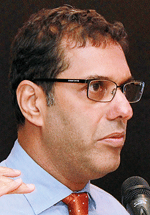
Murtaza Esufally (Director Hemas Group)
“School children have to be taught to think beyond the horizon of what will happen in another 10 years time instead of teachers instructing them to memorise lessons. What we perceive as good education in the country has to change to develop innovative skills of students. Do educationists realise the power of play and do they provide time for children to indulge in it? Instead children are loaded with tedious homework,” she added. “The 9-hour school period is detested by school children as they have no time even to rest. When we were young we had a wonderful time in school but our children are inundated with school work. We have to cut down the school curriculum instead of skirting around it,” Dr. Wanasinghe said stressing on the need to allocate more time for rest when designing new syllabuses for school children. “We all know and our politicians also know the need for reforming the education system. But can we ensure that such a system will be built in the future.”
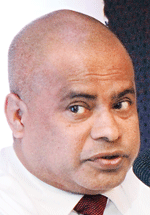
Sunil Hettiarachchi (Secretary Ministry of Education)
Dr. Balasooriya said the proposed education reforms in the country are being discussed and has not being finalised as yet. He said although education helps to develop the country economically it should also be aimed at developing human rights and providing quality development to the nation.
“There are about 4 million students in Sri Lankan schools at National and Provincial level. There is also Pirivena education that has existed for a long time apart from other private schools including 300 other international schools and educational institutions.”
He said according to 2016 data there are 10,000 schools in the country and enrollment at Grade 1 schools in the state and the private sector is about 98 per cent. “Everyone is concerned about educating their children despite their social background and their income level. The survival rate at the Grade 9 level is also around 92 per cent of those who complete education and the dropout rate is not taken into consideration. Although Sri Lanka has been hailed internationally for its education programmes state spending on education has been low.”
Referring to those who pass the A level examination, he said around 25,000 students get an opportunity to enter universities each year. “There are huge gaps in the system when it comes to admission of students to Grade 1 and those who enter universities that should be looked into. Many parents despite economic difficulties send their children abroad for further education.”
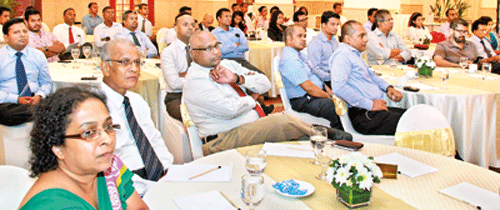
Section of the audience. Pix by Indika Handuwala
Equality for all students
He said the government is now considering educational reforms where every student whether in Moneragala, Polonnaruwa or Colombo has to be treated equally.
“There is a mismatch between skills development and the labour market in the country. We also need more technically qualified persons.”
He said the government plans to introduce Education Inspectors to gauge the standard of education at schools with the aim of further improvements. A 13-year mandatory education programme for all school children in the country will be introduced. The Board of Management of every school will be vested with powers to administer them well. Teacher education and improving the knowledge of the English language will be further developed, he said.
Mr. Esufally said that his company spends a lot in teaching the English language to its employees. “The biggest constraint today for most schools is finding suitably qualified teachers,” he said adding that because of this education structure employees lack the knowledge of challenging the mindset of the management. They also lack innovative skills.
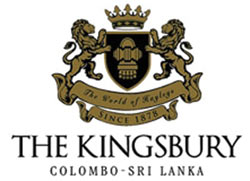
 Referring to a university in Singapore, he said the teacher was only a facilitator where students at a classroom were encouraged to debate with each other to disseminate knowledge.
Referring to a university in Singapore, he said the teacher was only a facilitator where students at a classroom were encouraged to debate with each other to disseminate knowledge.
He said the other factor that affects productivity was the ill health of employees. Most of their employees have stress related symptoms of sicknesses due to of lack of exercise. “They do not know how to cope with stress-related illnesses. Only 10-15 per cent of employees indulge in physical activity and our company therefore has embarked on a physical training programme for employees to acquire fitness to face challenges at the workplace. You cannot do anything unless you are physical fit. Human energy is the most-scarce and critical resource we have.”
He said when seeking workers, the company looks for those with innovation, accountability and entrepreneur skills. He said the education foundation in the country was weak and private companies cannot afford to chip into corret the system.
Education Secretary Sunil Hettiarachchi, who is a former member of the STBC, was also present and responded to many of the questions raised by the audience, at one point saying that the public and the corporate sector would be consulted in the new education reforms process.
| Key highlights of the presentation made by Dr. Jithangi Wanigasinghe, Consultant Paediatric Neurologist:With all the teaching are we getting there?
There is a need for -.
Play:
Reading:
Rest and sleep:
Physical burden:
Simplify text books:
| |
| Key highlights of the presentation made by Dr. Jayantha Balasooriya of the Ministry of Education:Sri Lanka: Trends in education as at June 1, 2016 National schools 353 Provincial schools 9,809 Total 10,162 No of students: National schools 798,800 Provincial schools 3,344,307 Total 4,143,107 No of teachers: National schools 37,308 Provincial schools 198,691 Total 235,999 School density (area covered by a school) is 6.5 sq km in 2015. There are 300 international schools, 104 private schools and 749 pirivenas and 10,162 government schools. Education at a glance:
in public and private schools =… 98.6 %
in international schools =……………. 1 %
(end of Grade 5) =…………………. 99.7 %
(basic compulsory education) =….. 92 %
grade 1 through 11= …. 50,000- 60,000 Education expenditure as a percentage of GDP (years of 2004-2015): It was 2.03 per cent in 2004, rising to 2.67 per cent in 2006 (in spite of the war) and then falling to 1.63 per cent in 2010. Thereafter it picked up to 1.82 per cent in 2013 and was 2.01 per cent in 2015. Proposed education reform proposals: aims and objectives:
education.
than book knowledge.
students.
Proposed reforms – 13 years of
School boards:
School inspectorates:
education.
E-library:
| |
| Key highlights of the presentation by Murtaza Esufally, Director – Hemas Group: | |
| Global trends that impact on Sri Lanka:
Our position:
Business challenges and
What unique skills can we bring to the global table?
Education for entry level:
Education while in the workplace:
Most effective training in our companies are
Tourism:
ICT:
Logistics:
Healthcare:
Conclusion:
|


